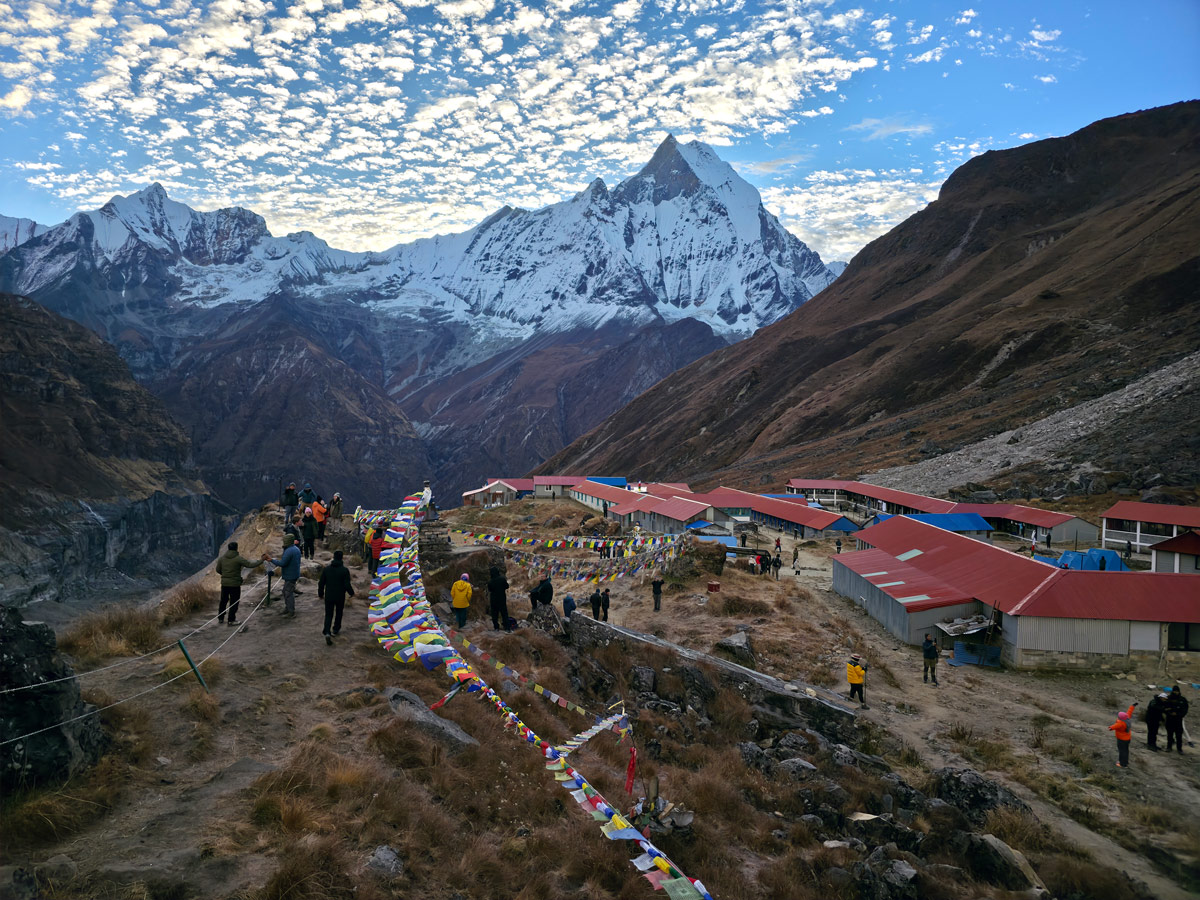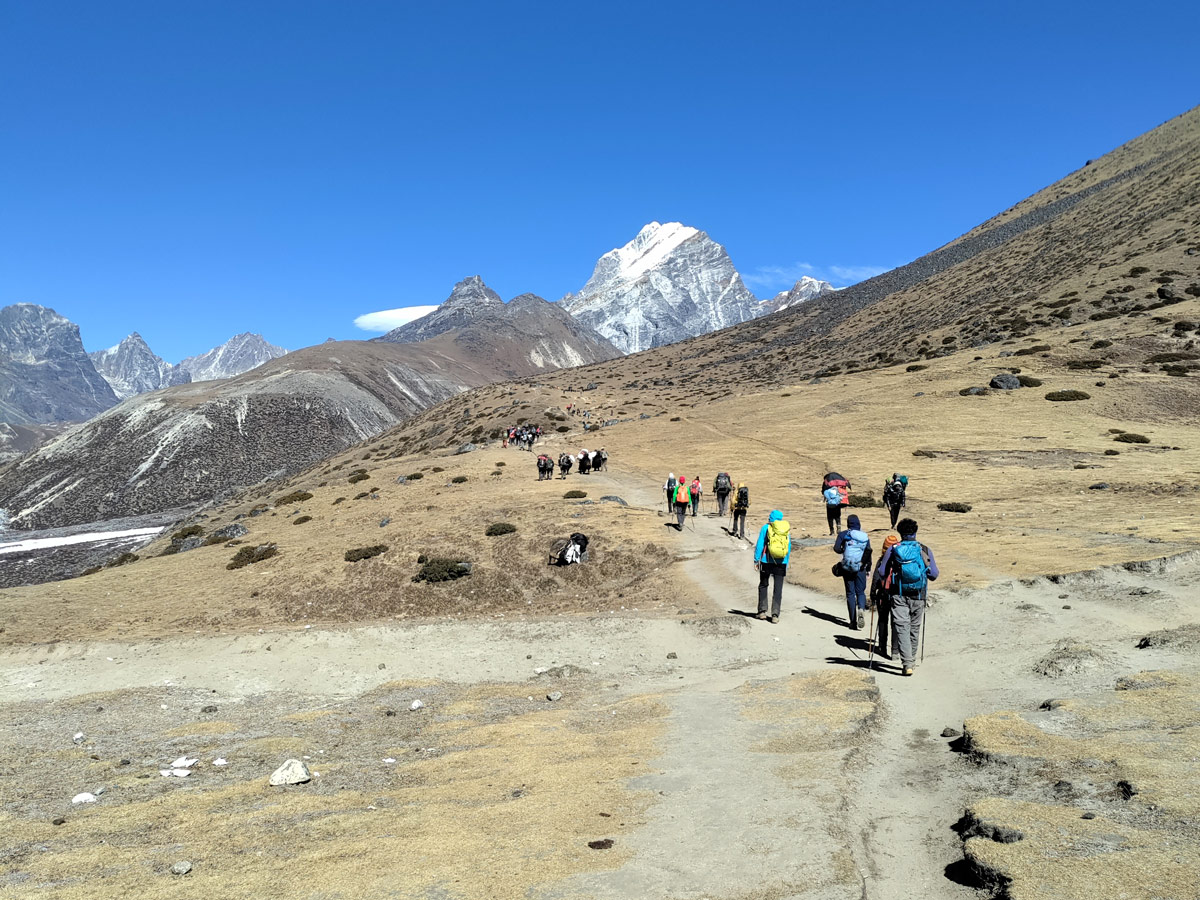Home to eight of the fourteen highest mountains in the world, Nepal is undoubtedly a trekker’s paradise and beckons adventure enthusiasts from all over the world who come to explore the trails surrounding these 8000-ers.
These intricate network of trails around each peak crosses the likes of scenic valleys, alpine forests, and several culturally rich villages which makes it an experience of a lifetime.
However, with so many regions to explore, a confusion usually lies in the mind of trekkers regarding which trekking region to explore first. And with each trekking region offering unique experiences, which region do you choose?
This choice can often be overwhelming, and at Ace the Himalaya, we understand that. Therefore, to prevent any mishaps, we have this blog discussing which trekking region in Nepal is best for you based on different factors. Keep reading!
Understanding Trekking in Nepal
Before delving into comparison of different trekking regions, lets understand what trekking in Nepal actually looks like so that you can make the correct and aware choice by assessing the pros and cons.
The treks in Nepal are basically different in terms of their difficulty level and are categorized as easy, moderate, and challenging treks. Based on their difficulty level, the duration of trek can range anywhere between 2 to 3 days to treks lasting over 15 days.

Different trekking regions also feature different ranges of altitude. You can get treks that take you to a maximum of 3,210 meters (10,532 feet) like the Ghorepani Poonhill Trek, or a trek that goes beyond 5,000 meters.
The terrain of the trek also significantly varies from region to region and some routes might even require you to have basic mountaineering skills. Understanding these things about a trekking region can help you figure out the best trekking route for you.
Overview of the Major Trekking Regions of Nepal
Below is a tabular glimpse of the quick comparison between the major trekking regions in Nepal to give you a basic idea before we delve into the details of each region.
| Trekking Region | Popular Treks | Difficulty | Duration | Permits | Best For |
| Everest Region | EBC, Gokyo, 3 Passes | Moderate to Challenging | 12-20 days | TIMS + Sagarmatha NP | Altitude thrill, iconic peaks |
| Annapurna Region | ABC, Circuit, Mardi | Moderate to Challenging | 5-18 days | TIMS + ACAP | Variety, accessibility |
| Langtang Region | Langtang Valley, Gosaikunda | Moderate to Challenging | 7–12 days | TIMS + Langtang NP | Close to KTM, cultural |
| Manaslu Region | Manaslu Circuit | Challenging | 14–18 days | RAP + MCAP | Remote, offbeat |
| Mustang Region | Upper Mustang | Moderate | 10–14 days | RAP + ACAP | Tibetan culture, desert |
| Kanchenjunga | North/South Base Camp | Challenging | 18–25 days | RAP + KCAP | Solitude, biodiversity |
| Dolpo Region | Upper/Lower Dolpo | Challenging | 15–25+ days | RAP + Shey Phoksundo | Remote, adventurous |
Key Factors to Consider Before Choosing a Trekking Region
You can’t decide the best pick for you by just comparing a feature or two. To know which trekking region in Nepal is the best for you, you need to consider and evaluate many factors. Below are some of them:
Trek Duration
This becomes one of the major factors to consider as the fatigue from consecutive days of long hours of walking can really get to you during the trek, especially if you are a beginner.
Therefore, you should pick a trekking region that features trekking days that lie within your comfort zone. How much time do you have to dedicate to the trek? Choose accordingly.

Some treks in the Annapurna region like Poon Hill, or Langtang Valley Trek can be completed in under a week, while others in the Everest region and Kanchenjunga might require 2–3 weeks.
Trek Difficulty
What are you looking for in a trek? Do you want to go for a leisurely walk while accompanied by views or a high-altitude adventure? Different regions offer different kinds of trek.

Based on the terrains, duration, and accessibility, the difficulty level of these treks significantly varies from each other. Pick a trek that is within your difficulty range or else you will be left dragging your feet by the end of the trek.
Altitude
Some trekking regions in Nepal like Everest region and Annapurna region are known mainly for their high-altitude treks with almost every trek taking you well beyond an altitude of 4,000 meters.
However, some treks in these regions as well as other regions also conclude at relatively lower altitude. You can pick a trek according to the stamina of your body.
Accessibility
Although there are accessible treks in Nepal, you will find that the treks near Annapurna region or Everest region are comparatively more accessible as opposed to the treks in remote locations like Dolpo or Kanchenjunga region.
So, if having accessibility in a trek is one of your priorities, it is better for you to stick to the popular regions like Annapurna, Langtang, and Everest region.
Accommodation
The same thing is to be considered when thinking about standard accommodation options during the trek. If you want proper amenities, popular regions like Everest and Annapurna are the best option for you.

However, if you don’t mind sharing rooms at a teahouse or sometimes even camping in the wild, you can always consider other options too.
Detailed Comparison of the Major Trekking Regions of Nepal
Now that we have covered a brief overview of the trekking regions of Nepal, let’s get into detailed comparison of each trekking region.
Everest Region
The legendary Everest region is undoubtedly the most iconic trekking region of Nepal. Also known as Khumbu, this region is home to the highest peak in the world- the mighty Mt. Everest (8,848 m).
This trekking region is the dream destination for most of the adventure seekers in the world. The Everest region is characterized by dramatic high-altitude landscapes within the Sagarmatha National Park.

You will see ancient monasteries clinging to hillsides along with fluttering prayer flags, and the vibrant and hospitable culture of the Sherpa people will further leave you with brave stories of the guardians of the Himalayas.
This region features treks like Everest Base Camp Trek, Everest Base Camp Trek via Gokyo Lakes, Everest Three Passes Trek, Gokyo Lakes Trek, Everest View Trek, and many other small to big treks ranging across different difficulty levels.
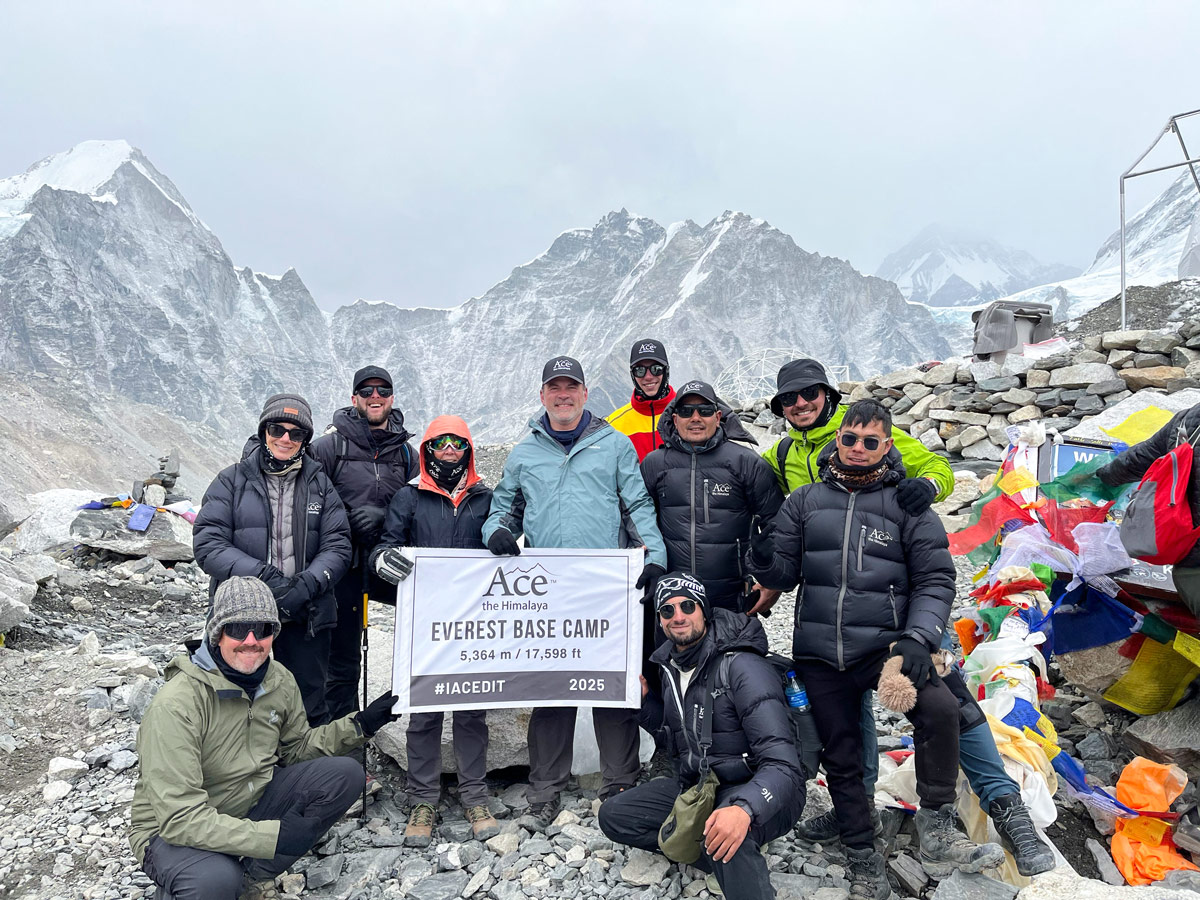
Some of the most prominent mountains visible from Everest region include Mount Everest, Lhotse, Nuptse, Ama Dablam, Makalu, Cho Oyu, Pumori, Kangtega, Thamserku, Khumbu icefall, and more.
However, given the popularity of Everest region, you will find that the trekking routes are often crowded which will leave you with staring at the backpacks of fellow trekkers rather than the views of mountains at many locations.

You might also face weather related delays and issues on your flight to Lukla along with fully booked accommodations if you don’t book well in advance, especially during peak trekking seasons in Nepal.
Annapurna Region
Another iconic trekking region in Nepal is the Annapurna region that is home to the tenth highest peak in the world- Mt. Annapurna. This region is located within the confines of yet another protected area of Nepal, i.e. the Annapurna Conservation Area.
This trekking region is Nepal is one of the trekker’s favorites as it is extremely versatile. You will see that the Annapurna region features countless trekking options that can be ideal for all levels of trekkers.

The Annapurna Region is also incredibly diverse in all aspects ranging from terrains and landscapes to cultures and cuisine. The region offers a spectrum of landscapes from subtropical forests and terraced fields to high alpine plateaus and glacial valleys.
A melting pot of culture, the region is mainly rich in Gurung and Magar culture. It is also dotted with charming villages and stunning close-up views of the Annapurna and Dhaulagiri ranges.

The infrastructure here is rather well-developed as compared to other trekking regions in Nepal and features abundant teahouses with different amenities including hot showers, laundry, wifi and internet, and more.
The highest altitude you will reach while trekking in Annapurna region is at the Thorong La Pass at 5,416 meters (17,769 feet). Most of the treks of this region can be accessed through Pokhara which is also known as the Gateway to Annapurna region.
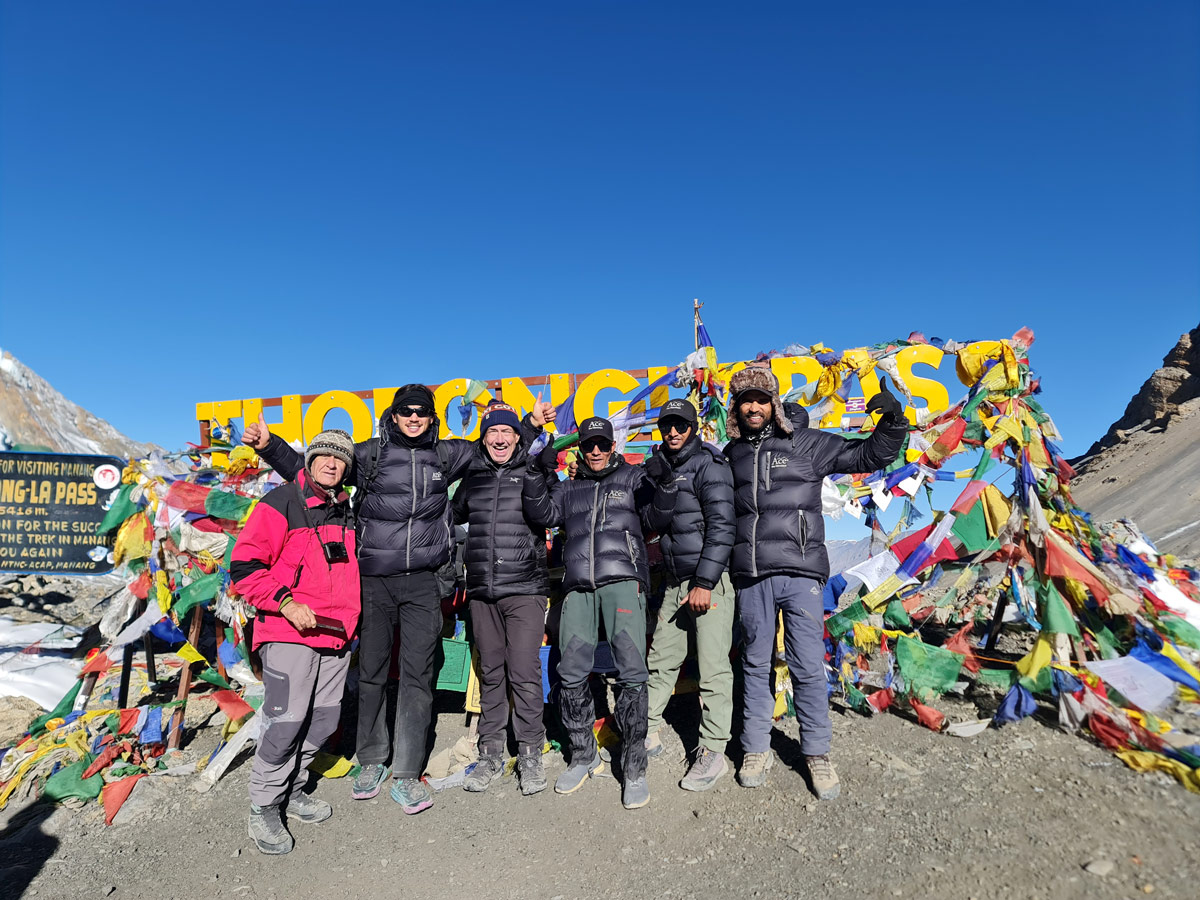
Some of the popular treks of Annapurna region include Annapurna Base Camp Trek, Annapurna Circuit Trek, Ghorepani Poonhill Trek, Mardi Himal Trek, and more.
However, the cons of trekking in Annapurna region are same as that of the Everest region. Given the views the region provides with ease and amenities, you will find the Annapurna region bustling with trekkers, almost throughout the year.
Langtang Region
If you are looking for peaceful treks that are not at much of a distance from Kathmandu valley, treks in the Langtang region can be perfect for you as it is the closest major trekking region to Kathmandu.
This region offers intimate trekking experience along with cultural immersion within the bounds of Langtang National Park. Regarded as the ‘Valley of Glaciers’, the main highlights of the valley are Langtang Glacier and Yala Glacier.
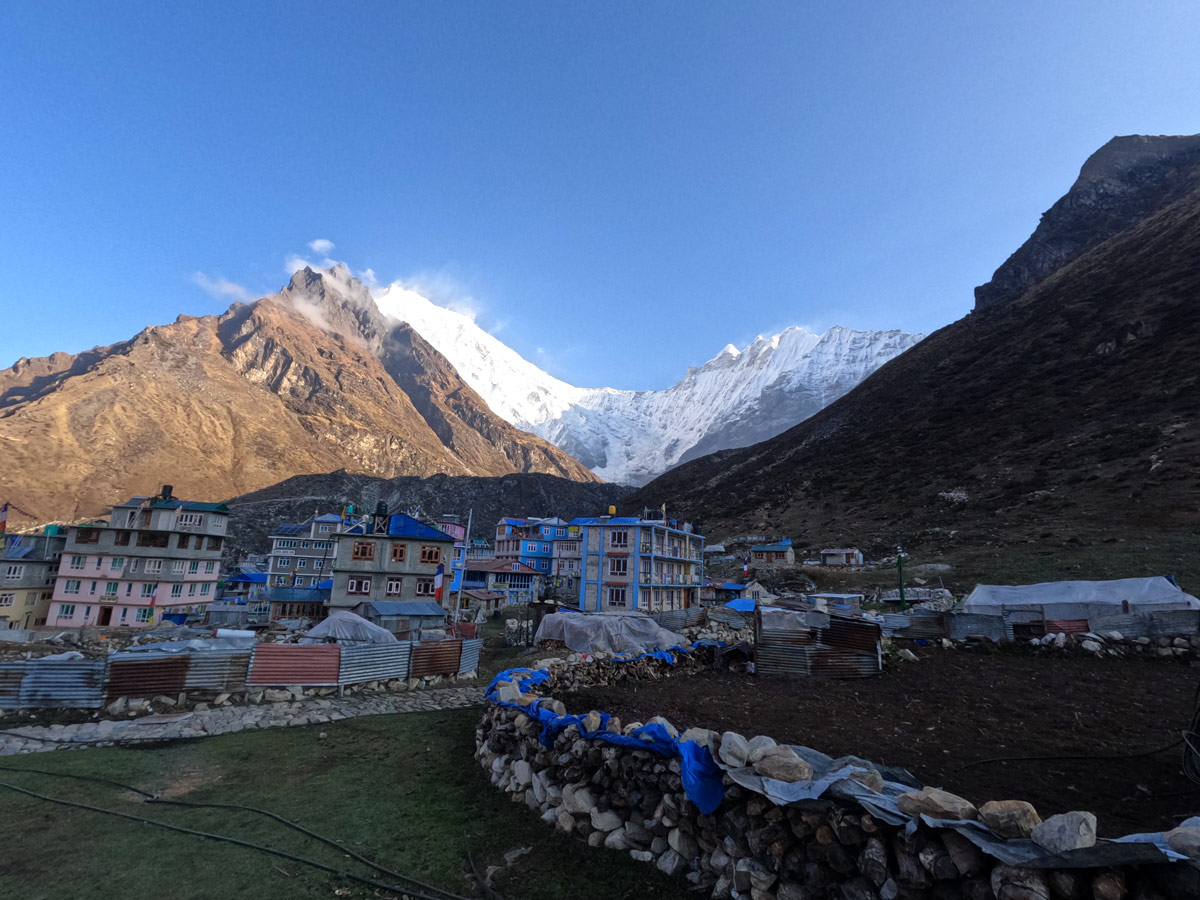
Among the popular treks in the region, the Langtang Valley Trek is the classic route, offering a relatively short journey with rewarding views of snow-capped peaks and picturesque villages.
The Gosaikunda Trek takes you to the sacred high-altitude lakes revered by both Hindus and Buddhists, while the Helambu Trek is a lower-altitude option that immerses trekkers in the culture of the Hyolmo people.
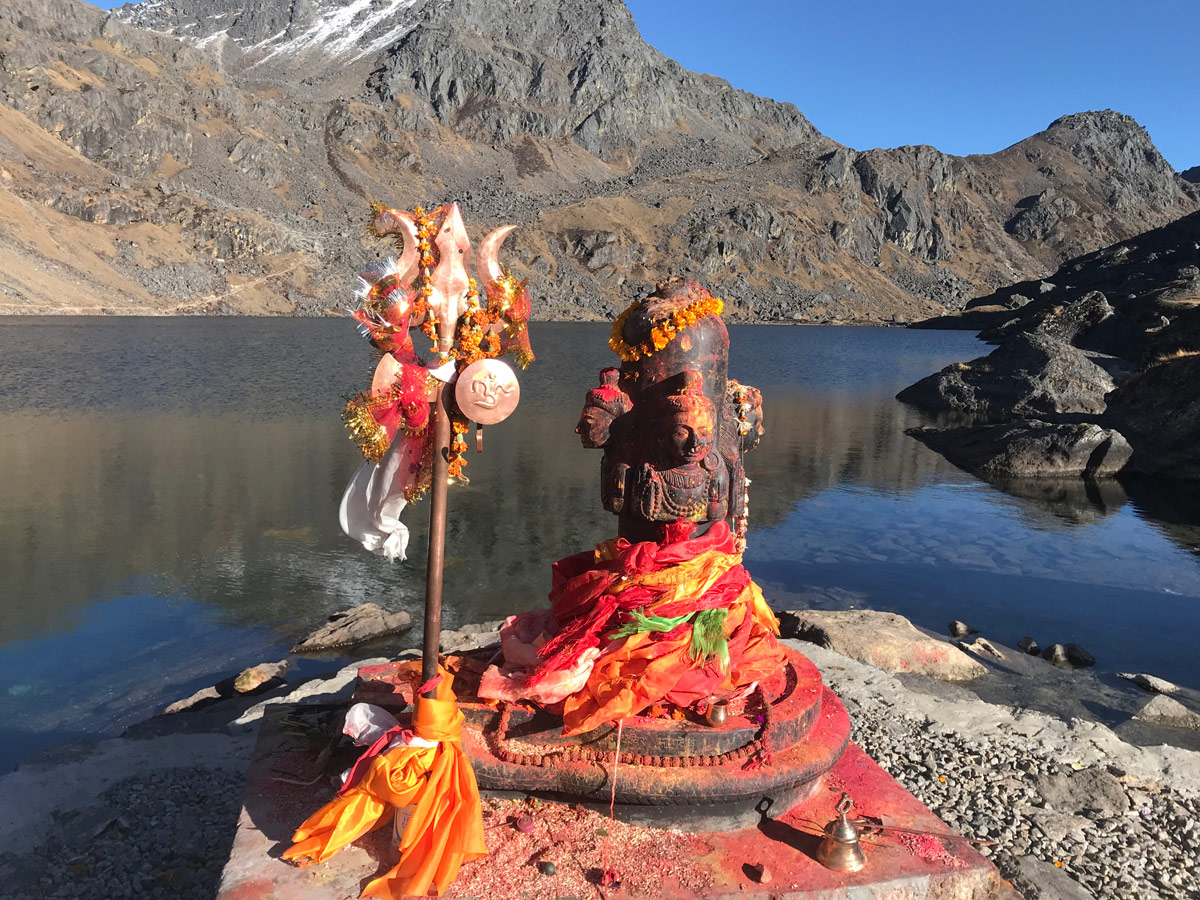
For more adventure-seeking trekkers, the Ganja La Pass Trek provides a challenging route that crosses a high mountain pass at over 5,100 meters, connecting Langtang Valley to the Helambu region and offering remote wilderness experiences with spectacular panoramic views of the Himalayas.
Along with pristine forests, Langtang region also boasts a wide range of stunning Himalayan panorama including peaks like Langtang Lirung, Ganesh Himal, Langtang Ri, Kyanjin Ri, Tserko Ri, Yala Peak, and more.

Not to forget the stunning Gosaikunda Lake surrounded by icy peaks that also lies in the Langtang region and further enhances your adventurous trekking experience.
As you explore Langtang region, you will find yourself enjoying the Tamang and Tibetan-influenced cultures. The region also features minimal crowd which means your experience will be much more peaceful.
Manaslu Region
An underrated gem in Nepal, Manaslu region is yet another remote and rewarding area to explore for trekking enthusiasts in Nepal. This restricted area is located within the Manaslu Conservation Area.
This region is home to the eighth highest peak in the world- Mt. Manaslu, and it provides one of the most raw, rugged, and real trekking experience in Nepal as it still has its roots deep into Nepali culture.
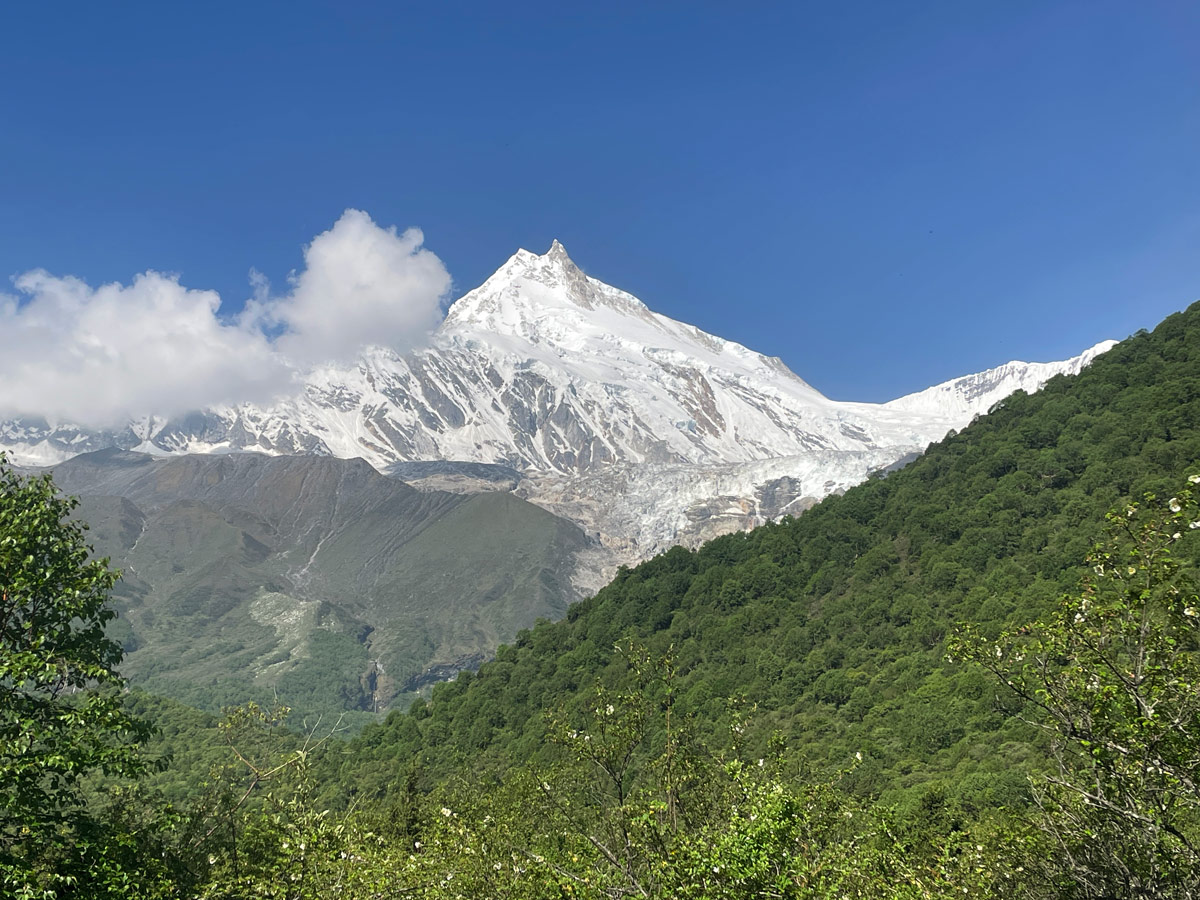
The region is completely untouched by modernity and hospitality business which means you will get to see the authentic life in the Himalayas. However, that also further adds to the challenge of trekking here.
The most famous trek in Manaslu region is the Manaslu Circuit Trek which is one of the off the beaten path experiences and a more peaceful alternative to the Annapurna Circuit Trek.
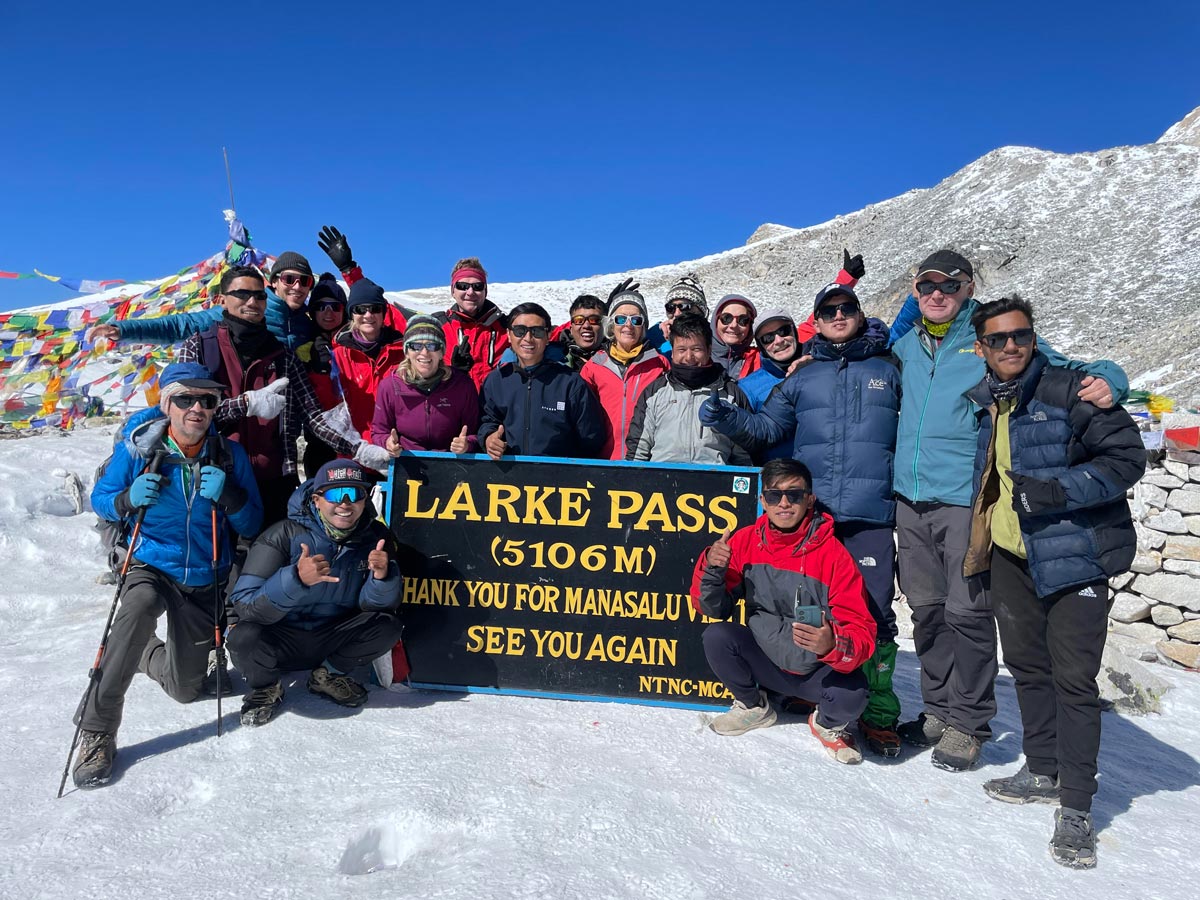
Another remarkable journey in this region is the Tsum Valley Trek, which takes trekkers into the hidden valley of Tsum, renowned for its ancient Buddhist culture, sacred monasteries, and traditional villages that have remained largely untouched by modern development.
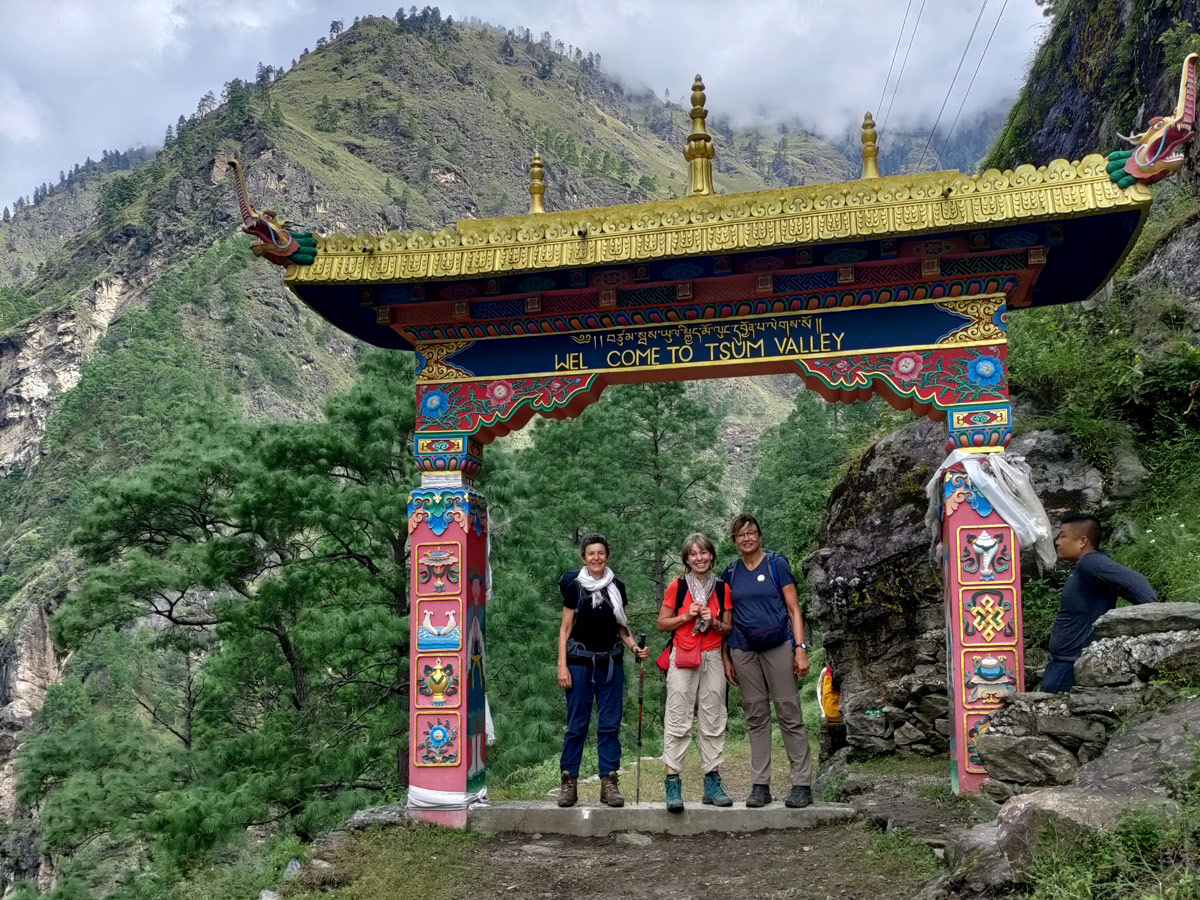
This trek takes you over different landscapes and eventually you will cross the challenging Larkya La Pass which is also the highest altitude that you will reach in Manaslu region at an altitude of 5,160 m (16,929 ft).
You will be immersed in Gurung and Tibetan culture to get a unique cultural fusion. A stunning mountain scenery also awaits you as you see a display of peaks like Manaslu, Himlung Himal, Cheo Himal, Kang Koru, Ganesh Himal, and Annapurna range.
Mustang Region
Yet another addition to the rugged trekking regions of Nepal, the Mustang region also offers stunning trekking experience. In fact, it is one of the favorite places to explore for locals as well as tourists.
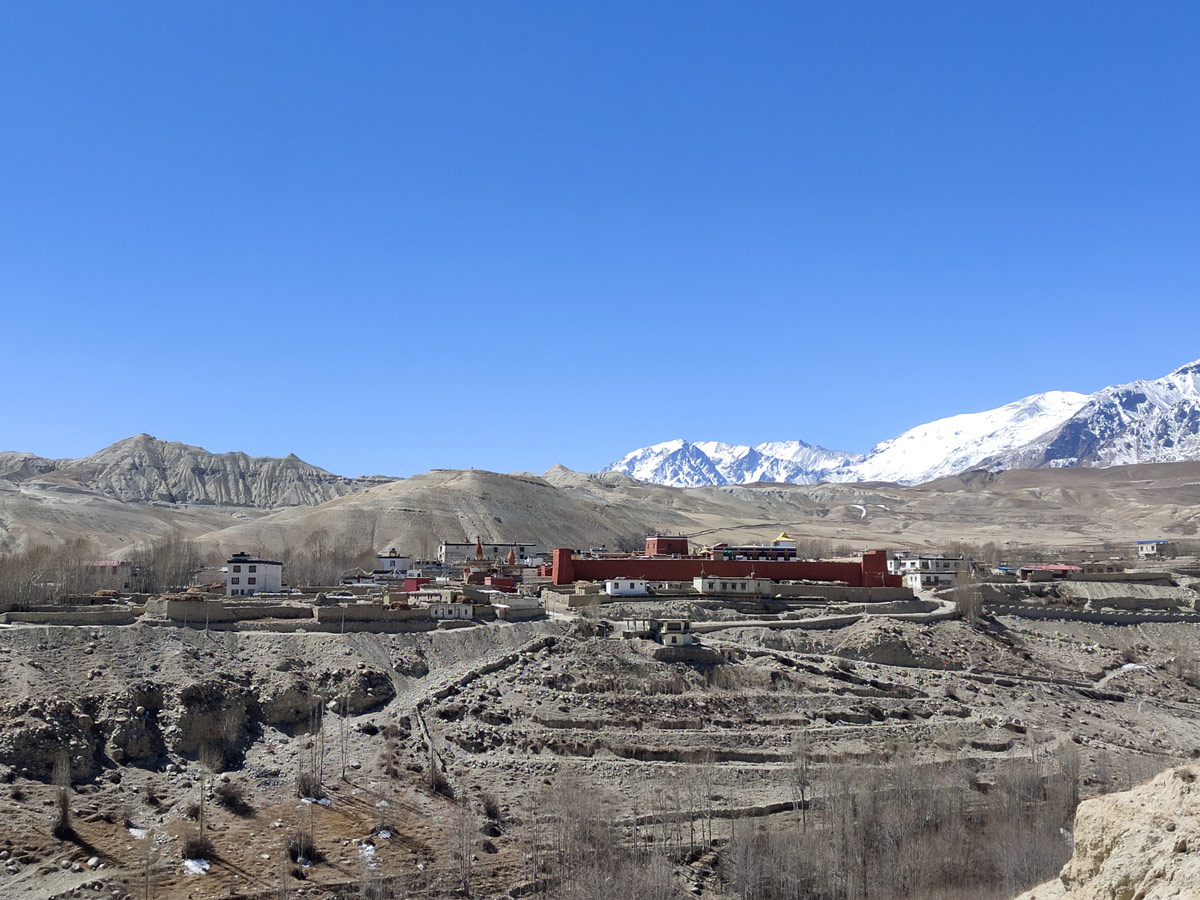
Exploring Mustang, especially Upper Mustang, is like suddenly exploring Tibet while still not leaving Nepal. This region once used to be a Kingdom, and now it is a stunning high-altitude desert.
The Upper Mustang Trek along this trans Himalayan region takes you to explore the likes of ancient monasteries, caves, and the walled city of ‘Lo Manthang’, all within the perches of the stunning ‘Forbidden Kingdom’.
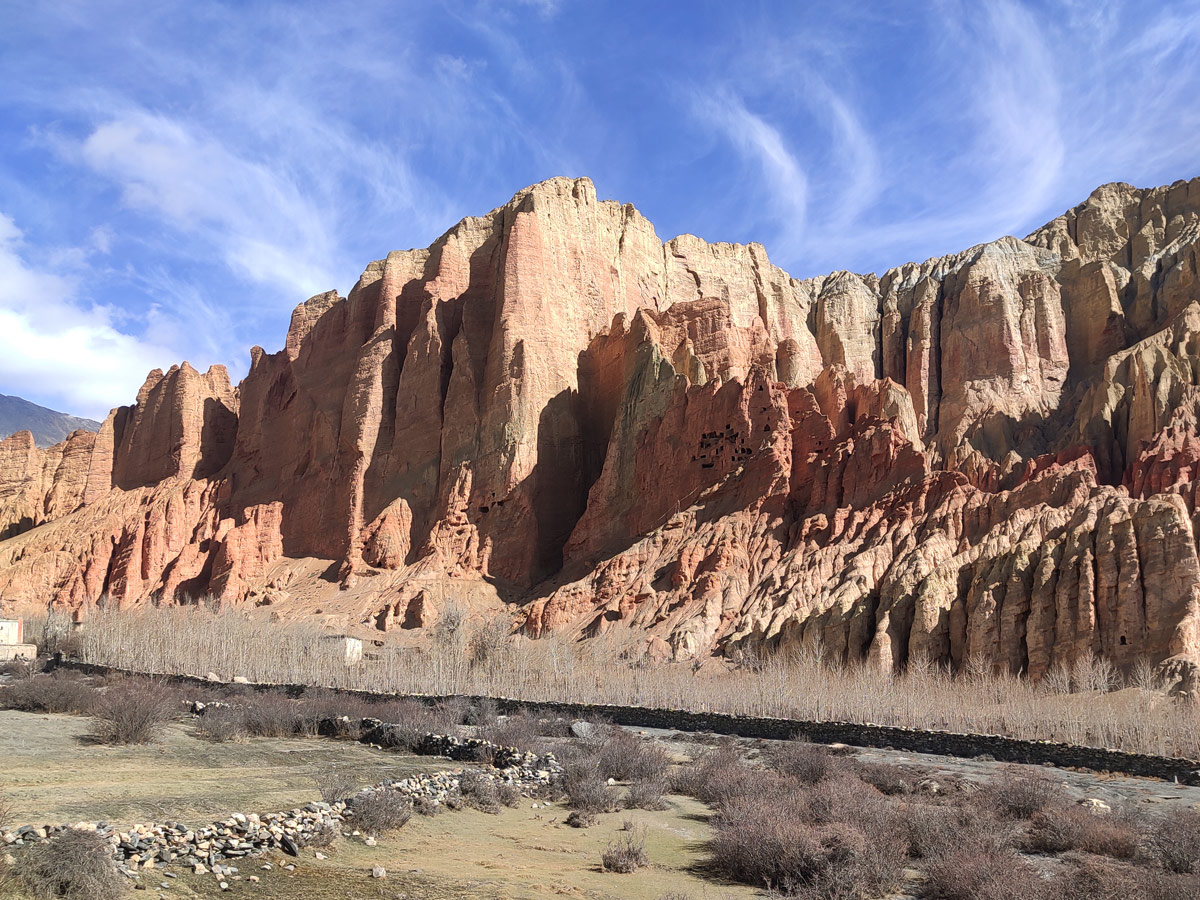
However, this is a restricted area which means you will need much more documents and permits to explore Mustang region.
Kanchenjunga Region
Often regarded as the hidden giant of Eastern Nepal, the Kanchenjunga region, although underrated, provides trekking options that are worth taking the challenges that they come with.
You will have a rather raw and unfiltered trekking experience here, which means it will come with its fair share of troubles. This is why it is counted as Nepal’s least-traveled trail to its second-highest peak.
This region, as the name suggests, is home to Mt. Kanchenjunga which is the third highest peak in the world. The most famous trek in the region is the Kanchenjunga Base Camp Trek.
Through this trek, you can reach to two different altitudes at the north and the south base camp. However, the highest altitude reached on the Kanchenjunga trek is up to 5,143 m (16,873 ft) at the North Base Camp.
Again, this is also a restricted area, which means you will require a restricted area permit. Once you are all prepared for Kanchenjunga Base Camp Trek, it can be a dream adventure for you.
Dolpo Region
The final name on the list, Dolpo region is yet another remote location that you can pick if you don’t mind the challenges and would prefer a rugged experience rather than a crowded one.
This is one of the most culturally preserved trekking destinations in Nepal as you will find an almost extinct Bon religion that is practiced here along with Tibetan Buddhism.

Along with dramatic landscapes, you will also have quite a few spiritual experiences here. The most famous trek here is definitely the Upper Dolpo trek that takes you up to an altitude of 5,000 meters.
This region is characterized by high passes and true wilderness, often requiring camping. While Lower Dolpo can be moderate, Upper Dolpo is quite strenuous and ideal for those seeking ultimate solitude and an unchanged way of life.
Conclusion
Now that we have gone into detailed comparison of all the trekking regions of Nepal, let’s finally answer your question- which trekking region in Nepal is the best for you?
Well, there is no region that can be declared the best as each trekker comes with their own set of preferences and expectations from a trek. So, you need to analyze your preferences and what each trekking region provides side by side.
Once you have done that, you can pick the region and the trek that best suits you. Worry not as no matter your preferences, short or long, cultural or scenic, easy or challenging, Nepal has a trekking region just for you.

